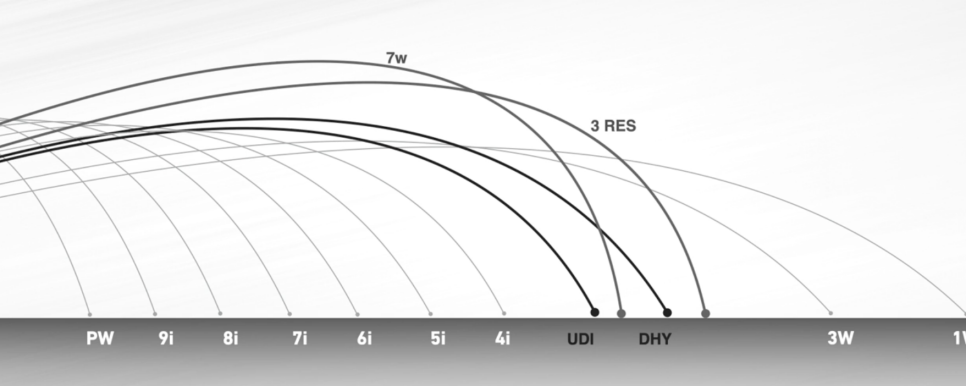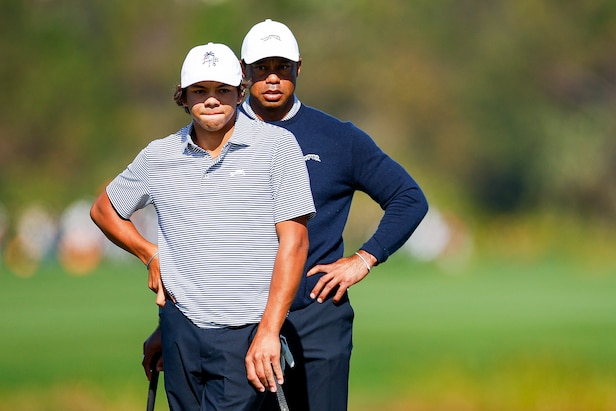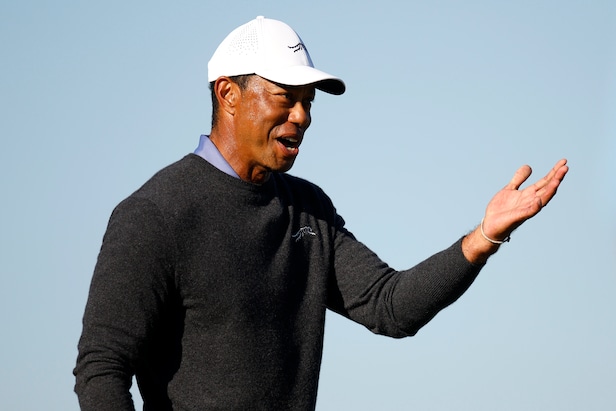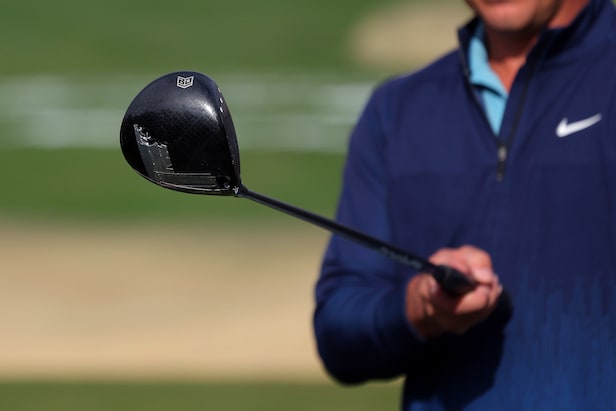TaylorMade P·UDI, P·DHY utility irons: What you need to know – Australian Golf Digest

- by Admin
- May 3, 2024

WHAT YOU NEED TO KNOW: TaylorMade moves its utility irons under the “P” family, providing more of a definitive better players look, feel and performance to the longer section of the bag. The new, sleeker P·UDI and wider-soled P·DHY aim to replace the long irons, hybrids or high-lofted fairway woods in the bag by offering a flatter, more penetrating flight, but still exhibiting the ball speed of a flexible face iron. Moreover, the use of internal tungsten weighting boosts forgiveness, and in the case of the P·DHY, the most forgiveness of any iron in the TaylorMade lineup.
PRICE: $250. P·UDI: 2 (17 degrees), 3 (20), 4 (22); P·DHY: 2 (18 degrees, 3 (20), 4 (22). UST Mamiya’s Recoil DART shaft (105X, 90S, 75R). Available May 3.
3 COOL THINGS 1. Playing the long game. While plenty of talk over the years about set makeup has focused on the short end of the bag and how many wedges one might carry to optimize the distance gaps in the scoring clubs, much less has been seriously discussed about the long game. Fact is, from a fitting perspective, there are a lot more options with the longer clubs, including game-improvement long irons, hybrids and high-lofted fairway woods. While it’s admittedly a smaller audience, the one area that’s sort of been overlooked has been the utility iron. TaylorMade has offered two options in the past, the UDI and the DHY and its latest versions reflect a bit more a better player focus, hence the addition of the “P” designation, as in P·UDI and P·DHY. This lines up with the company’s performance irons that target better players, running from the P·7MB and P·7MC used by elite players to the more forgiving hollow, fast-faced irons like the P·770 and the most successful iron in the line, the P·790.
“When you look at the demographics of who’s playing this type of iron, they definitely skew towards better player,” said Matt Bovee, TaylorMade’s director of product creation, iron and wedge. “But when you say better player, it’s a relative term. In other words, I would agree that these clubs are for someone who uses a players distance iron. But I don’t think it’s like, you’ve got to be able to play blades and muscle cavities only sort of deal to have one of these or more in the bag. Still, it’s definitely a better someone with the skill and/or the aspiration of getting better.”
Bovee pointed to data that showed the range of players who’ve purchased past versions of these clubs to fill distance gaps in this part of their bags has ranged into the 20-handicap area.
While the two clubs generally produce a flatter, lower flight window than typical fairway woods or hybrids, each is designed with characteristics to make them a more effective alternative to a long iron. That includes as much as 26 grams of tungsten placed low within the head to yield better launch conditions. But that tungsten is unseen. What’s more obvious is the sole on each model, wide on the UDI (compared to a traditional long iron) and even wider on the DHY.
“That sole width is going to be their first signal to the amount of forgiveness and their brain is going to look at that and think, ‘Can I actually play this?’” Bovee said, noting that the P·UDI features more sole width than on the most forgiving “P·series” iron, the P·790. But per input from TaylorMade’s tour staff the P·UDI features a shorter blade length to make it feel easier to launch “The face height got taller in both the heel and the toe,” Bovee said. The toe got more pronounced compared to where we’ve been in the past with this being a P·series product.”
Meanwhile, the P·DHY uses its extra-wide sole to keep mass low while pushing the center of gravity back for extra stability. But it still maintains a decidedly player-y look, Bovee said.
“I wanted to try to make it look a bit more traditional than it has in the past while still giving players the performance benefits that come with that shallower face and wider sole,” he said.
2. Rethinking forgiveness. The utility irons still exist in a distinct region when it comes to forgiveness. They don’t launch the ball as high as fairway woods or hybrids, and they don’t have the size and CG depth to make them as forgiving on mis-hits as wood options. But there’s another kind of forgiveness that those who are fans of utility irons prefer. Specifically, many better players feel hybrids and fairway woods with their potentially deeper CGs have more of a natural tendency to drive the ball to the hook side. That’s where the P·UDI and P·DHY come in. First, both benefit from the thin 4140 steel face that wraps around the leading edge in an L-shape. The variable thickness design interacts with TaylorMade’s proven sole slot to create more rebound, while the use of the same foam featured in the P·790 irons (called “SpeedFoam Air”) creates a forgiving, softer feel at impact.
And while these clubs are geared to better players long-game replacement clubs, the internal tungsten (as much as 26 grams) and wide sole help to make the P·DHY TaylorMade’s most forgiving long iron.
Just as interesting is how the internal mass is optimized for each design. The lowest loft on the P·UDI (17 degrees) actually features a slightly higher CG compared to the other P·UDI irons and the P·DHY irons. The idea is the higher CG helps produce a more of a driving trajectory that is ideal for hitting those bullet or stinger tee shots.
“That 2-iron is designed to stay low, stay out of the wind and chase,” Bovee said. “Now when you get into a 3- and 4-iron, however, that’s a little bit different and we want that CG to be a little bit lower. We want the iron to be more playable. We want the spin rate to be a little bit different.
3. Which one’s right for me, or is it none? Traditionally, the fitting of utility irons has been, well, a mixed bag. The problem is players don’t always have the right options to try in a fitting scenario, and Bovee said that aspect will be rectified with this launch. In addition to more facilities providing fitting versions of the PUDI and PDHY lofts, the renewed focus on fitting includes offering a heavier X-flex shaft that resonates more with the better players who might be playing heavier steel, extra stiff shafts in their irons and looking for a smoother transition to a utility iron. Bovee believes the audience for the wider-soled P·DHY is a bit broader than for the P·UDI
“So with the CG difference here between the two of them, the DHY has a lower center of gravity, the UDI has a mid center of gravity,” he said. “Your launch angles are going to follow your center of gravity, so the UDI is going be mid to mid-low and then your DHY is going to be like mid to mid-high. The DHY is going to be easier to launch in the air than the UDI, for sure.”
One thing is a given, though. Like the “P” in the name, these clubs are targeting better players.
“I think if you’re a slower swing speed player, you need to start with like a weaker-lofted fairway wood or a hybrid club like our Rescues,” Bovee said. “They’re just easier to get in the air. But you need some club head speed to be able to launch something like a UDI. If you’ve tried woods or hybrids and been afraid of the left miss, then looking at the UDI and DHY is a good step because the CG is closer to the face, there’s less gear effect and there’s less concern of the left miss.”
But it’s not as simple as either of these utility irons being a permanent replacement club. It may be situational to the course. It may depend on how light the rough is (with deep rough a high-lofted fairway wood might be a better option, for example). But just as many tour players put in utility irons for the British Open, so, too, could a utility iron be a good replacement on tighter courses or for that dream golf trip to Scotland, Ireland or Bandon Dunes.
This article was originally published on golfdigest.com
The Latest News
-
December 23, 2024Annabel Sutherland’s sizzling summer continues as Australia ease to win over New Zealand
-
December 23, 2024BREAKING: Aussie grand slam champ accepts anti-doping ban
-
December 23, 2024Kyrgios return ‘super exciting’ for Australian tennis says Alex de Minaur
-
December 23, 2024‘Got some good bants’: Hilarious stump mic warning as Konstas plots secret Bumrah counter
-
December 23, 2024Former AFL player Aaron Shattock fighting for life after excavator accident





